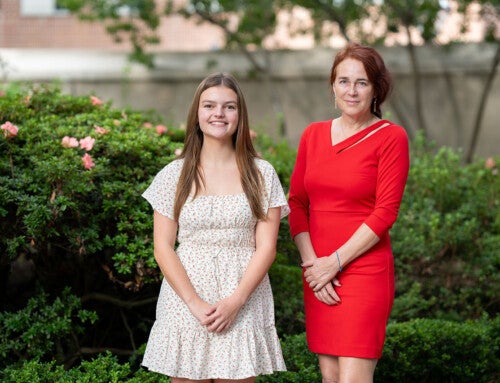Above: The birthplace of Charleston civil rights leader Septima Clark on Wentworth Street, now a historic house owned by the College, is among the sites included in a series of new tours highlighted through the College’s history website Discovering Our Past.
The College of Charleston Discovering Our Past website project is expanding. The College has added five new African American history tours to the multi-media website launched last spring as part of the institution’s 250th anniversary celebration.
Developed in collaboration with the Center for the Study of Slavery in Charleston, the five new thematic tours focus on the history of slavery and its enduring legacies in Charleston. Created by College of Charleston graduate students, the tours show where Black residents of Charleston created their own opportunities to secure their place in the city’s social, cultural and economic landscapes during the eras of enslavement, Reconstruction and Jim Crow.
“We are honored to showcase these students’ research documenting the richness of our city’s Black history – stories of suffering and injustice, and stories of the many Black Charlestonians who have resisted oppression and continue to create vibrant communities,” says Julia Eichelberger, English professor and co-founder of the Program in Southern Studies.
The five tour themes are:
-
Sites of Agency, which highlights Black entrepreneurs and property owners from before and after the Civil War, including the 74 George Street house which was owned from 1866-1880 by an African American woman, Virginia Ferrette.
- Sites of Care and Community provides stories of schools, social and medical institutions, and religious organizations in Charleston. These locations “illustrate some of the many ways in which the African American community created social support systems on their own,” including the Shaw Community Center (originally a school named for Col. Robert Shaw), the Jenkins Orphanage and the Cannon Street Hospital.
- The Sites of Oppression tour explores “the violence of racial terrorism, the vehement resistance to integration, and the governmental neglect of Black communities from the nineteenth through the twenty-first centuries.” Locations include the Charleston Work House, the Francis Marion Hotel and the home of a slave-owner who was also a free woman of color.
- Sites of Resistance demonstrates that “Black Charlestonians have resisted their treatment as second-class citizens” for many generations. This tour includes the “Mother Emanuel” AME Church, the Septima Clark birthplace on our campus and the Charleston NAACP office.
- Sites of Fellowship discusses Black religious sites in Charleston, noting that this history is diverse and complex. These sites include some buildings no longer extant, such as Zion Presbyterian Church, and some that students often walk past, such as Mt. Zion AME on Glebe Street.
Using the College of Charleston as the center, the tours move outward from the campus in a radius of eight blocks or less to the north, south, east, and west to sites that reveal stories of community endurance, resistance, fellowship and agency. The Center for the Study of Slavery in Charleston is also hosting two upcoming panel discussions via Zoom on related topics, including one on April 1, 2021, titled “Telling Truer Stories at CofC,” and the second on April 7 titled “Restorative Responses Beyond CofC.”
History professor Rachel Donaldson says she is proud of the work her graduate students did to establish these new tours.
“The students who contributed the essays to these tours managed to work through archive closures and all the personal, academic and professional disruptions from COVID,” she says. “I commend them for working through everything – even continuing to edit into the summer after they received their final grades, which demonstrates an enormous amount of dedication to their work and to this subject.”
The College of Charleston launched the Discovering our Past website last year as a way to tell a fuller story of the university’s long and complex history. The website, which also includes a mobile app for Apple and Android smartphones, uses essays, historical images, drawings, documents and maps as well as contemporary photos to illustrate a more completed picture of the College’s history.
And Eichelberger expects this site to continue to grow.
“If we uncover more information and images, we can add them to these stories in the future,” says Eichelberger. “There are many more stories that need to be shared on the diverse communities that have lived in Charleston. We hope more CofC students and faculty will research and write stories we can publish on this site.”





